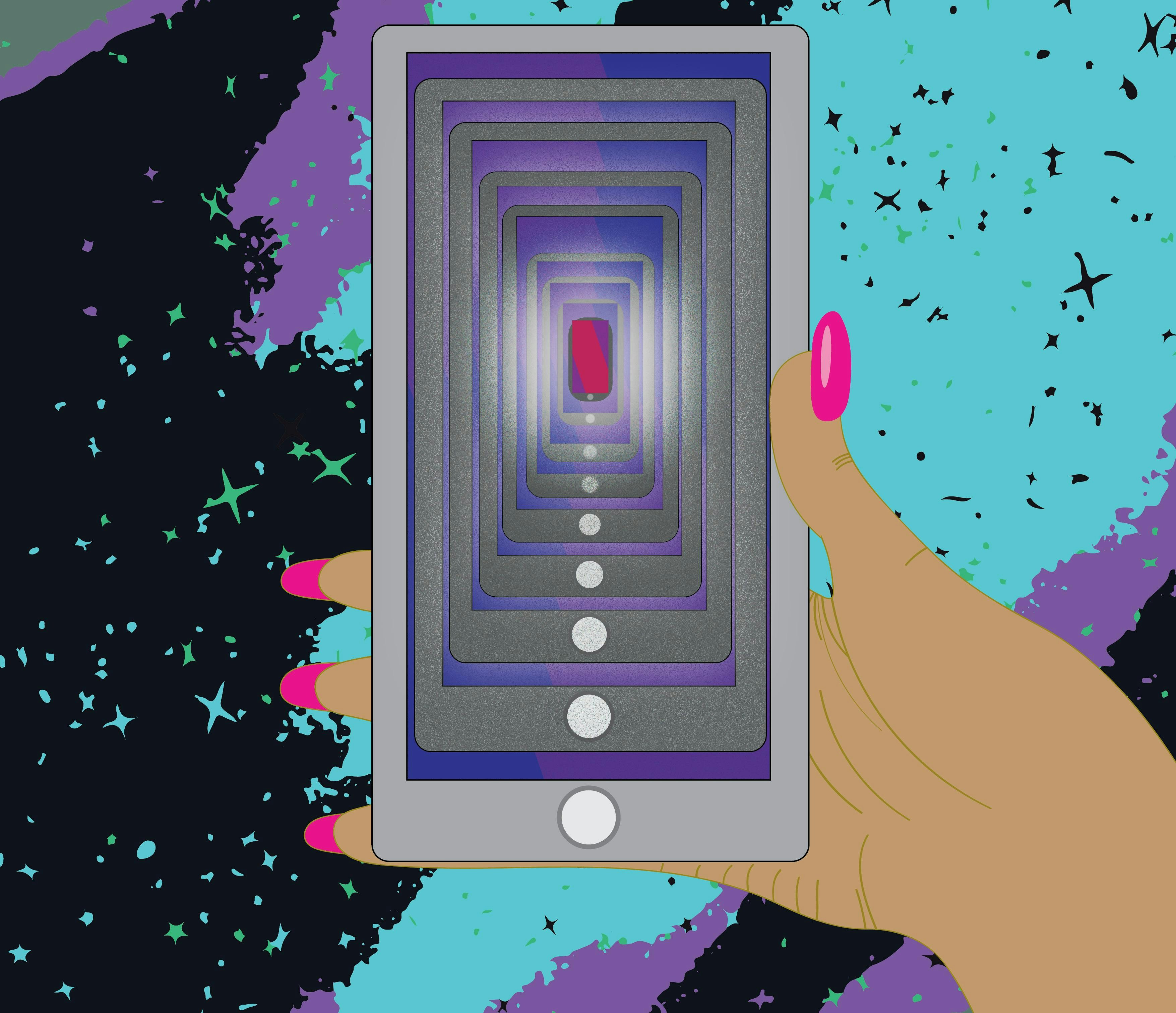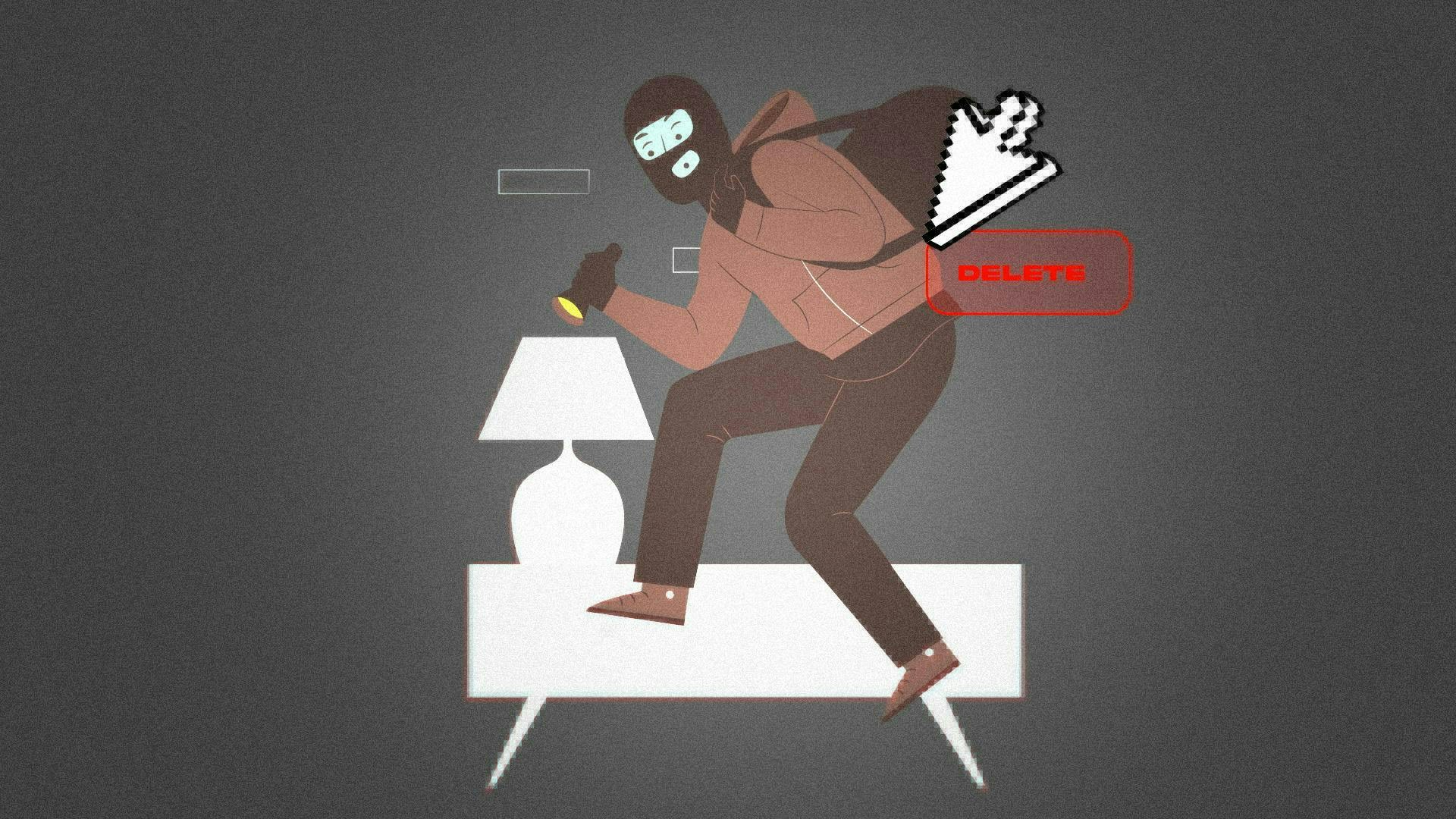Censorship by design: Emoji regulation and its implications for meaning
TOPICS
Social MediaApple recently followed through on plans to change the look of a commonly-used emoji: A syringe filled with red liquid, with droplets coming out of it. Apple removed the droplets and replaced the red with blue.
The stated goal was to make the emoji—previously commonly used to connote blood donation, among other things—more vaccine-friendly in the context of the COVID-19 pandemic.
Reading about this outwardly unremarkable change, I considered Apple’s capacity to make structural alterations to resources we use to communicate. We tend to think of our words and interactions as opportunities for individual agency, particularly in the context of user-generated media. But this decision challenges some of those assumptions.
There is a tension between creativity and control, and it defines the relationship between users of digital technologies and the organisations that produce and manage them. This tension plays out on a variety of scales. It’s in the contrast between centralisation and decentralisation that characterises markets in the virtual economy. It’s expressed in functional and regulatory limitations on how tech is used, and in strategies users develop to circumvent them. It raises issues about changing regimes of property and ownership, and emerging infrastructures of belonging that yield new definitions of what it means to be human.
Emoji have become an increasingly universal feature of online communication over the past few years. But strategic design choices, and limitations on their use, by powerful industry actors like Apple are a potent example of how the tension between creativity and control also plays out here, in the attempt to manage the symbolic resources we make meaning with.
What does this mean for self-expression? These efforts inevitably shape the participatory environments that users can build. They also say a great deal about the power dynamics that will shape the design and use of digital tech in the future.
EMOJI AND SOCIAL JUDGMENT
Generally speaking, people are good at making judgments regarding rules around proper communication. Shared ideas about who you can speak to, what to say and where you can say it are codified into social norms across cultures, including so-called mother-in-law languages that often require entirely separate vocabularies and forms of politesse, dictated by stringent rules of formality and informality. Some argue that the languages we speak not only shape our worldview but our perception, even our capacity to distinguish colors.
Emoji emerged into this space of social judgment, and meaning-making, as an increasingly conventionalised component of global communication. They weren’t necessarily a welcome arrival.
Transformation in styles and speaking techniques challenge cultural models of acceptable behaviour and notions of shared identity. Emoji are no exception. Like “text speak” before them—framed by some as the death of English—emoji were likewise prophesied as harbingers of the “the death of the written language,” something Crispin Thurlow and Vanessa Jaroski term a “semiotic ideology of language endangerment.” This represents a set of ideas around language use, where some languages are viewed as killers, whilst others need protecting.
In this context, disapproval of emoji use is rife. A Google Chrome extension even lets you block emoji characters, a useful indicator of the intense emotions emoji can provoke.
Nevertheless, their communicative potential is widely recognised. They can represent emotional states and affective responses, and signal irony. But they can also be used in conventionalised ways that drive community formation. According to Emojipedia, emoji represented 20.47 percent of all tweets analysed in December 2020. Marcei Danesi calls them a universal visual language, whilst Takuma Kakehi termed emoji the “fastest growing language in the world.”
It’s debatable, from a linguistics perspective, whether emoji constitutes an actual language, given that its similarities to gesture are greater than its similarities to grammar. But despite fears about their destructive potential, emoji played a significant role in transforming digital communication, including in the field of public relations.
SETTING EMOJI STANDARDS
Emoji are, in a sense, a closed system. Whilst control over their structure and availability is maintained by the Unicode Consortium, a whole ecosystem of variation exists around this central orbit, where platforms and operating systems build their own designs over unicode foundations. In use, the physical form of emoji is immutable. Thus the relationship between emoji designers and users is unequal.
Proponents of democratising methods for emoji design and selection have written about lack of end-user inclusion in the design process. Still, it is possible to petition for changes in the basic structure of emoji, for example in the case of Tinder’s #RepresentLove campaign, which joined arguments for greater diversity in how emoji represent ethnic and gender differences. This followed Apple and Google’s 2014 proposal to add a skin tone modifier to Unicode, to broaden the diversity of emoji characters.
But just like words, emoji meanings can become enregistered—socially recognised as meaningful in specific ways. This means their meanings can shift by context. And it affords emoji semiotic power that can be used for strategic ends.
EMOJI AND CONTROL IN PUBLIC CONVERSATION
This has resulted in a number of attempts to structure strategic communications through emoji design changes. Apple’s decision to modify the syringe emoji to facilitate public sentiment about COVID-19 vaccinations is a timely example, underscoring the relationship between emoji use and context, and the role platforms play in adjudicating the propriety and pertinence of semiotic resources. The removal of a cigar from the popular WeChat “commando” emoji, in the hope of bolstering anti-smoking initiatives in China, served a similar public health-oriented purpose.
The syringe emoji modification isn’t the first time Apple has changed an emoji's design. In 2016, it replaced the revolver emoji with a water pistol to prevent promotion of gun violence. Whilst anti-gun campaigners welcomed this, response from gun rights advocates in the US was vocal and swift. One developer announced plans for an app called Gunmoji, under the hashtag #ArmYourPhone, which appeared on Apple’s App Store later that year.
Whilst this tapped into a powerful public discourse on public access to guns in the US, the impact was distributed across the system of the shared emoji lexicon, linking a decision with political relevance, in a given geographical context, to global architectures of meaning-making.
There is an important contrast to note between the relationship of emoji to real contexts, lives and politics ... and what some called the pointless switching of a gun for a toy. This speaks to conversations in other domains about the futility of digital activism generally, sometimes pejoratively called clicktivism.
Whatever one believes about the measurable effects of changes to the design of emoji, clearly dominant actors like Apple are able to help shape the agenda. An emoji’s appearance has a fundamental bearing on its meaning, and changing that alters how it is used. Many platforms and operating systems followed Apple’s lead, so the decision also impacted the shape of the emoji lexicon.
These transformations in the architecture of our communication resources are attempts to shape affective responses as well as public understanding. In this sense, they represent a new kind of public relations strategy. This touches on matters of public health, but may also reflect particular interests of corporations and other private actors.
Still, given the complex ecosystem within which emoji operate, how any single one appears can shift depending on the end user’s platform, or even the OS version of the viewer. So there are limits to what individual platforms can do when it comes to emoji’s visual structure.
There have been more straightforward attempts to regulate—that is, censor—emoji use, versus merely modifying them. One recent example is Facebook and Instagram censoring use of “suggestive” emoji strings: Emoji associated with sexual activity, like the aubergine and peach. This was seen as a war against sex workers, a claim denied by Facebook. Yet there are major implications for sex workers, particularly OnlyFans creators, many of whom use Instagram as a marketing tool.
Unlike the gun-to-water-pistol modification, whose impact is difficult to measure, in this case there are direct links between strategies of emoji control and “real world” outcomes; platforms like OnlyFans, and similar services, became mechanisms where sex workers could engage in work safely during the COVID-19 pandemic. It also posed specific problems for trans sex workers, who may rely on OnlyFans to escape the threat of sexual violence or to fund healthcare and transitions.
As manifestations of a simultaneously moral and ideological stance, these decisions—which imply a judgment about sexual mores—cannot be separated from other attempts to regulate participatory space. Similar policies around nudity impacted numerous artists, activists and advocates. Policy-making, or outright control over emoji use, are often animated by the ideological agendas of both platforms and users. Cultural systems of value judgment may effectively sanitise content, but also engender other forms of risk.
Still, if emoji meaning can be enregistered, people find alternatives when necessary. That is, if emoji meanings can be conventionalised, they can also be subverted. So they present opportunities for resistance to stipulations of permitted emoji use in specific contexts, just as mother-in-law languages and forms of politeness are manifestations of similar rules around socially appropriate uses of language.
People always do more with technology than what designers intend. Despite attempts to control their use, emoji likewise play a role in this process. In China, people evading censorship of the #MeToo hashtag instead used #RiceBunny—which operates as the homophone mi tu—with the associated pairing of the rice bowl and rabbit emoji. So emoji can provide mechanisms for sidestepping discourse controls through codes. By drawing attention to the relationship between the Chinese government and the media companies that operate under it, it also highlights the interplay between corporations and nation-states.
THE POLITICS OF LANGUAGE CONTROL
Attempts to control communicative resources are among the fundamental mechanisms through which power is wielded in any society. The very notion of a language as a defined standard emerged from a similar—frequently more violent—system of forceful erasure of linguistic difference and associated social identities, voices and forms of personhood. This occurred in the building of national identities and the so-called civilising process of colonialism.
Behind the “unity” of standard languages are judgments outlining proper form and meaning. As speakers, we are limited in the meanings we can articulate in our speech. Words we use are established by convention, the product of political power. It has even been argued that the struggle to define meaning is at the root of all politics.
But today, corporations play a significant role in managing semiotic resources. This doesn’t only happen in spaces they own and (some might say “fail to”) regulate. Corporations are also active in managing the contemporary propagation of English as a lingua franca. So whilst language standardisation was traditionally bound to national identity formation, now it is enmeshed with the transformative power of corporations, frequently enabled by users’ digital labour. Per Luke Stark and Kate Crawford, “Emoji are instances of a contest between the creative power of affective labor and its limits within a digital realm in the thrall of market logic.” This dynamic will typify virtual environments in the future.
Management and moderation of online discourse is but one part of a broader manifestation of power relations linking users and technology. Where might this lead? Speaking on the disruptive power of blockchain, Bob Wigley and Nicholas Cary propose that the future is decentralised. This is echoed in our own work on the future of the Virtual Economy, where we see huge potential for growth in marketplace decentralisation.
This isn't just about how economic transactions will be regulated in these spaces. It offers a view on the kinds of possibilities that will exist for producing spaces of engagement and belonging through digital technologies, beyond the control and oversight of dominant forces in virtual environments.
EMERGING POWERS
Emoji, says Marcei Danesi, have “many implications for the future of writing, literacy, and even human consciousness.” This is an exciting prospect for those open to transformation in our ways of speaking. Perhaps more pressingly, it speaks to a broader struggle over the freedom—and limits—to shaping the future of our engagement with digital technologies and the communities, publics and social spaces they mediate.
This will be a profound struggle. We already see its manifestation in new forms of radical politics on social media, a threat to prevailing notions of democracy and participation within the context of an epistemic crisis fuelled partly by social platforms.
Attempts to control the shape and use of emoji are symptomatic of a fundamental structural shift in the loci of power within technocapitalism, tied to the rise of the platform society. The contemporary dominance of platforms raises questions about publicness, and who is responsible for defining and managing the common good. This shift in power relations that structure social life touches on the production of public space and resources we use to communicate. (Apple notably bowed to Chinese pressure to remove the Taiwan flag emoji in Macau and Hong Kong.)
Who controls semiotic resources, especially media, is a topic of enduring concern. It animates notions of despotism, as in George Orwell’s 1984. It is also becoming increasingly complex in putatively democratic states such as the US, where there now exists an entrenchment of linkages—a so-called “revolving door”—between corporate partisan media and government.
But in an emerging geopolitical reality, where corporations wield power previously reserved for nation-states, what are we to think of established definitions of authoritarianism as primarily a manifestation of state power? In considering the management and regulation of communicative resources, we face crucial questions about the limitations imposed on meanings we may articulate, and thus on the kinds of social worlds we might build through engagement with technology.
LIMITS TO WHAT WE CAN KNOW
Beyond these concerns and their ethical implications, these are significant considerations in our research frameworks within the Digital Anthropology stream at L’Atelier. When we acknowledge that communicative resources aren’t always freely available or evenly distributed, this has profound implications for the knowledge that can be produced digitally. The breadth of participation, and representation possible, within a social space is deeply marked by the so-called digital divide—with regard to fluency, and even access to the technologies that are increasingly central to everyday life. When we consider the impacts of growing inequality, the implications of such trends are pronounced.
This piece itself points to another type of digital divide—not of access, but of who does and does not have the power to transform architectures of participation on platforms, with their various implied hierarchies and dependencies. Everyday digital use is the product of ongoing power struggles, mediated by the relationship between users and digital technology creators. This has important implications for the significance of the data we gather and, in particular, for the kinds of worldview we can claim such data unveils.
15 Jul 2021
-
Anthony Kelly
Illustrations byDebarpan Das.
DATA-DRIVEN TECH & SOCIAL TRENDS. DISCOVERED WEEKLY. DELIVERED TO YOUR INBOX.
02/03
Related Insights
03/03
L’Atelier is a data intelligence company based in Paris.
We use advanced machine learning and generative AI to identify emerging technologies and analyse their impact on countries, companies, and capital.


